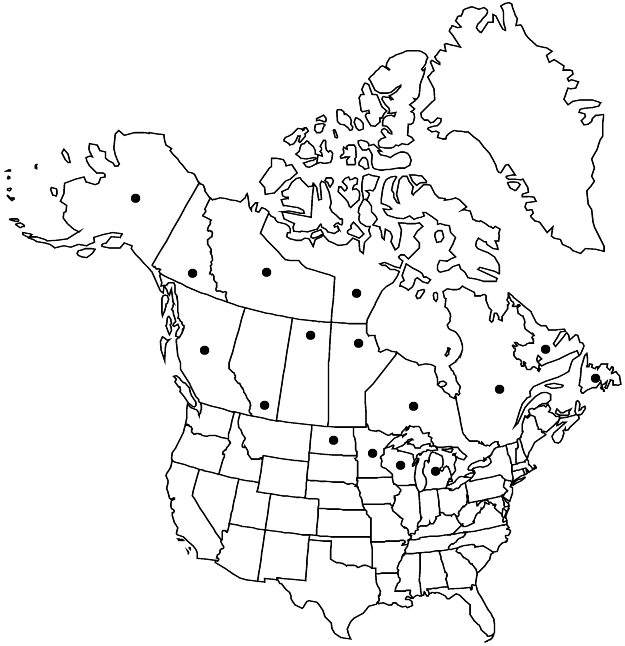Difference between revisions of "Minuartia dawsonensis"
Amer. Midl. Naturalist 7: 132. 1921.
FNA>Volume Importer |
imported>Volume Importer |
||
| (One intermediate revision by the same user not shown) | |||
| Line 8: | Line 8: | ||
}} | }} | ||
|common_names=Rock stitchwort;minuartie de Dawson | |common_names=Rock stitchwort;minuartie de Dawson | ||
| + | |special_status={{Treatment/ID/Special_status | ||
| + | |code=E | ||
| + | |label=Endemic | ||
| + | }} | ||
|basionyms={{Treatment/ID/Basionym | |basionyms={{Treatment/ID/Basionym | ||
|name=Arenaria dawsonensis | |name=Arenaria dawsonensis | ||
| Line 77: | Line 81: | ||
|publication title=Amer. Midl. Naturalist | |publication title=Amer. Midl. Naturalist | ||
|publication year=1921 | |publication year=1921 | ||
| − | |special status= | + | |special status=Endemic |
| − | |source xml=https:// | + | |source xml=https://bitbucket.org/aafc-mbb/fna-data-curation/src/2e0870ddd59836b60bcf96646a41e87ea5a5943a/coarse_grained_fna_xml/V5/V5_250.xml |
|subfamily=Caryophyllaceae subfam. Alsinoideae | |subfamily=Caryophyllaceae subfam. Alsinoideae | ||
|genus=Minuartia | |genus=Minuartia | ||
Latest revision as of 22:09, 5 November 2020
Plants perennial, sometimes mat-forming, green. Taproots filiform to somewhat thickened. Stems erect to ascending, green, 4–30 cm, glabrous, internodes of flowering stems 1–10 times as long as leaves. Leaves overlapping or crowded proximally, variably spaced distally, connate proximally, with tight, scarious to herbaceous sheath 0.2–0.5 mm; blade straight to slightly outwardly curved, green, flat, 1-veined, occasionally 3-veined abaxially, linear to subulate, 4–15 × 0.5–2 mm, flexuous, margins not thickened, scarious, smooth, apex green or purple, mostly rounded, slightly navicular, shiny, glabrous; axillary leaves present among proximal cauline leaves. Inflorescences 7–15-flowered (rarely fewer), open cymes; bracts subulate, herbaceous. Pedicels 0.3–2.5 cm, glabrous. Flowers: hypanthium disc-shaped; sepals prominently 3-veined, ovate to broadly lanceolate (herbaceous portion ovate to broadly lanceolate), 2.5–3.2 mm, to 4 mm in fruit, apex green to purple, acute to apiculate, not hooded, glabrous; petals lancolate to spatulate, 0.5–0.8 times as long as sepals, apex rounded, entire, or petals absent. Capsules on stipe ca. 0.2 mm, ovoid, 3.5–4.5 mm, longer than sepals. Seeds dark brown to black, suborbiculate with radicle prolonged into tiny beak, 0.5–0.6 mm, tuberculate; tubercles low, rounded, somewhat elongate. 2n = 30, 60.
Phenology: Flowering late spring–summer.
Habitat: Moist, calcareous ledges and gravelly areas (dry, open, and sometimes disturbed slopes, calcareous-gravel raised beach ridges, thin soil over limestone) in mesic forest openings and meadows in montane and subalpine areas and boreal plains, dry, open outcrops in oak or juniper savannas or prairies
Elevation: 0-900 m
Distribution

Alta., B.C., Man., Nfld. and Labr., N.W.T., Nunavut, Ont., Que., Sask., Yukon, Alaska, Mich., Minn., N.Dak., Wis.
Discussion
Although sometimes included in Minuartia michauxii [e.g., H. J. Scoggan’s (1978–1979, part 3) treatment of Arenaria stricta], M. dawsonensis is more closely related to the circumpolar M. stricta.
Minuartia litorea, known from Quebec and Ontario, may deserve recognition. An unpublished chromosome count suggests that it is a recent allopolyploid derived from M. dawsonensis and M. rubella (L. Brouillet, pers. comm.).
Selected References
None.